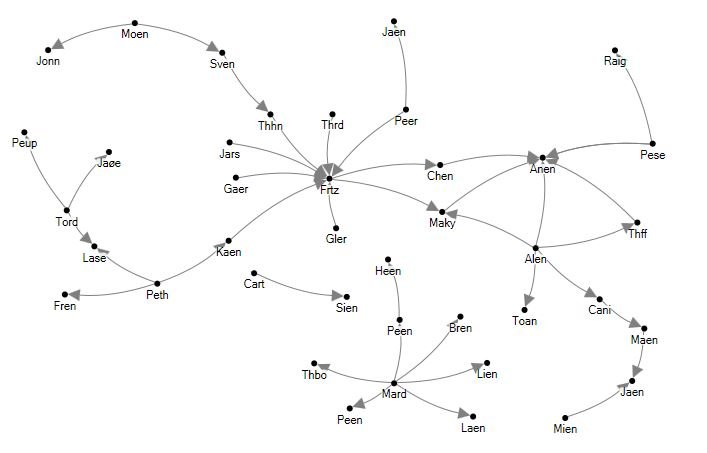When employees praise each other in public, good stuff happens!
By Erik Korsvik Østergaard, 28. September 2014
 How do you know, if your leadership activities actually pay off?
How do you know, if your leadership activities actually pay off?
Answer: You measure who your employees have as role models – and why.
During the last eight months we’ve been encouraging employees to use the ‘praise’ function on Yammer (an internal social media tool) to give a thumbs-up or a pat-on-the-back to colleagues who deserved it.
The purpose was to get the positive feedback out in the open; to shed light on who (and what) the role models are on peer level, and hence to strengthen personal leadership. Also, to establish something that was NOT controlled by top management but a very transparent and involving mechanism for giving credit.
It was a successful move.
How we did the setup
The company in this case is a Danish IT consultancy with 120 employees in four locations, which has Personal Leadership as a key strategic area. I was privileged to have the responsibility for the activities in this track. We’ve been educating each other in leadership, in motivation theory, and in taking responsibility – for yourself, your colleagues, your projects/services/products, and your customers. Also, in when to say yes and no. Question is: Does it matter?
We launched the praise activity with this design:
- Give praise on Yammer, using the ‘praise’ functionality
- State a reason why she or he is praised
- Each month, the most praised employee will be appointed.
Honorable nominations are also high-lighted. - With the appointment follows a prize of 1,000 DKK, which the winner must use on the colleagues, not for personal benefit
Outcome
Success! The illustration shows a typical network of praises. Each arrow points towards the one being praised (the names of the employees are masked for privacy reasons).
Quantitatively: Clearly, praise spawns praise, in two ways. First of all, over the months we got more and more praises, and the praises came from all locations and departments/teams. Secondly, if you receive a praise, you will very likely pass it on.
Qualitatively: People are being praised for three things: (1) For being a leader and taking on some tough battles e.g. with customers, (2) For being professionally strong or innovative, (3) For a great effort and hard work in peak periods.
Read more about how we create a organizational network analysis here >>
Identify informal leaders
![]() By doing this, we have – in a transparent way and across locations – identified both informal leaders as well as what behavior that is appreciated on peer level. A great learning experience, for managers and for employees.
By doing this, we have – in a transparent way and across locations – identified both informal leaders as well as what behavior that is appreciated on peer level. A great learning experience, for managers and for employees.
In this situation (illustration), the employee Frtz was praised for stepping up and addressing some unpleasant dialogue with a customer. The employee Anen was praised for leading the group into a new way of working. Finally, the employee Mard praised a bunch of people for some hard work during a tough period.
Does the money matter?
No. The 1,000 DKK that follows the appointment has no effect, the employees say. Instead, the effect and pride comes from the pat-on-the-back, and from being recognized amongst peers (serotonin kicks in here).
So, do employees give praise for the behavior that management wants?
To great lengths, yes. And yes, this is the test of your leadership activities and the actual pay-off.
We have three strategic pillars: Personal Leadership, Customer Satisfaction, and Financial Performance (rather classical). We want employees who are role models in supporting this, and yes, I believe that this is what we see.
The great task is still to nurture a culture and provide leadership, that makes the employees thrive, commit, and be enthusiastic – and to become the role models that are needed for themselves and for the organization.
The real test of the success of your leadership investment is, if the employees agree with you and follow you. This can be directly measured by monitoring the praises and looking at the characteristics of the employee-appointed role models.
Looking for a thought-provoking speaker
with knowledge of the future
and how to turn it into daily life?
Our newsletter is filled with articles and tools
for the modern
future-oriented leader
Do you need input on how to get started?
Take a look at at our categorized toolbox here
– it’s all free






